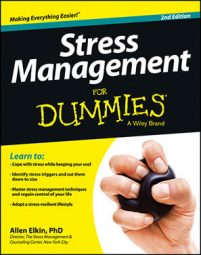Anger is not an automatic reaction beyond our control, even though it may feel like that at times. Instead, anger is a response that can be managed. So, before your next outburst of rage and fury, take a look at some of these anger-reducing strategies and tactics. Who knows? They just may save you from a nasty argument, an upset stomach, costly litigation, or worse.
Keep an eye on stress with an anger log
The first step in managing (and ultimately eliminating) much of your stressful anger is knowing what it looks like and where it comes from. A simple anger diary, or anger log, can help you identify those times when you are angry and give you the information you need to begin feeling less angry.
Simply enter in your log (a small notebook, a piece of paper, a file on your laptop — whatever works for you) the times when you became angry and what triggered your anger. Also, rate the level of your anger using a simple ten-point scale, where a rating of ten means “very, very angry,” five means “moderately angry,” and zero means “not angry at all.”
Also rate on a ten-point scale the importance of the situation or event that triggered your anger. Rate as a one, two, or three triggers of “minor” importance; rate as four, five, six, and seven situations of “moderate” importance; and rate as eight, nine, or ten events or triggers that you judge to be of “major” importance.
Take a look at the example in this table:
| What Happened? | Importance | My Anger Level |
|---|---|---|
| My child spilled juice on the couch. | 3 | 6 |
| I missed my train by one minute. | 2 | 5 |
| My boss blamed me for a mistake made by my coworker. | 4 | 7 |
| My computer crashed, and I lost the last hour’s work. | 3 | 8 |
Check your stress balance
Find out if your anger is excessive and inappropriate by checking your stress balance. Just compare the level of your anger with the importance of the anger-producing situation. Use a ten-point scale, where ten means “incredibly important” and zero means “not at all important.”
Insert that rating next to your description of the distressing situation. You’re “in balance” when the two numbers match; chances are your level of anger is appropriate and functional. But if your anger level is higher than the importance of the situation, you’re likely overreacting. And if your level of anger is way up there (eights, nines, or tens), you may be experiencing rage and hostility rather than garden-variety anger.
Using the examples in the table, the juice spilled on the couch is probably an importance level of three; missing the train, a two; being unfairly blamed, a four; and losing data because of a computer crash, a three. In each case, the person is overreacting and off-balance.

